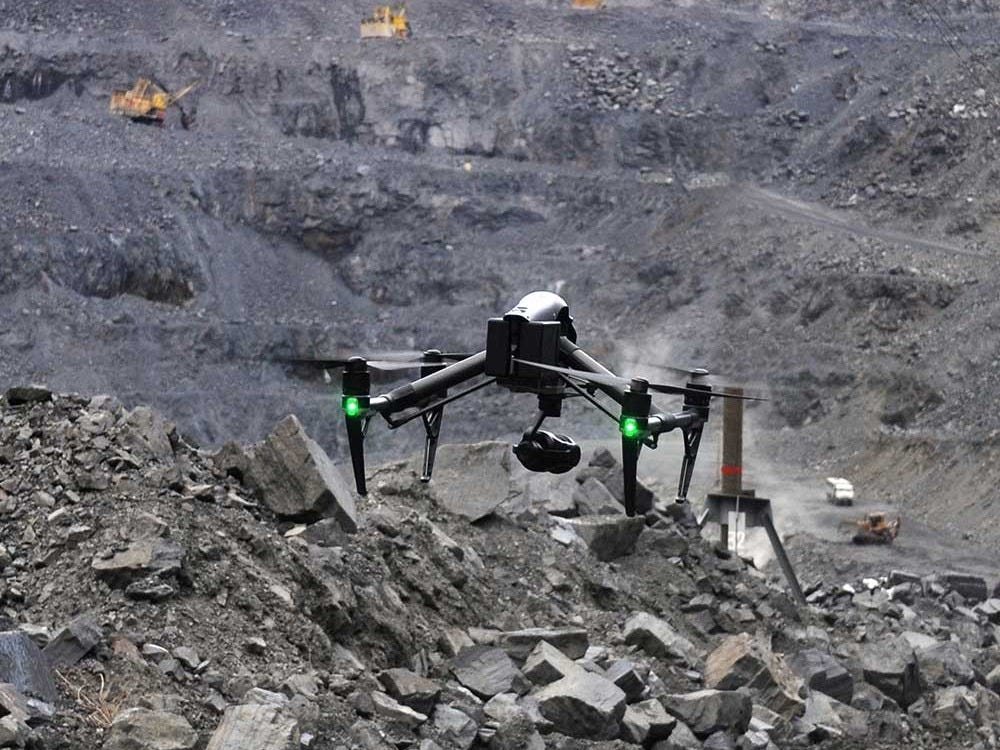Critical Minerals Fuel Drones, Missiles, and Empire
Is the rhetoric of Critical Minerals for “National Security” just code for more drones and deadlier jets?
Nandita Lal
Urgency discourses around critical minerals have become all-encompassing in the West since Trump came to power in the USA this year. Dominant policy frames— that once centred especially from the 2010s around mining for clean energy technologies are now shifting back to mining for security.
Imperial anxieties are high. Mineral supply chains are being prioritized not because they must be, but because the West fears losing power to countries like China. China not only dominates critical mineral refining by geography, but also by ownership. By both geography and ownership, China produces over 95% of battery-grade graphite and rare earths. It is also ready to use export bans as a strategic “weapon.”
In 2023, China imposed export controls on gallium and germanium, followed by antimony in August 2024, and severely restricted exports of all three to the U.S. by December 2024. Albeit this was in a response to US’s semiconductor export restrictions to block China’s access to advanced AI chips. It showed China’s defiance to geopolitical pressure.
Military Demand – Small But Crucial
According to the IEA's Global Critical Minerals 2025 report, defence applications account for a small share of critical mineral demand—typically under 10%, even for high-use minerals like titanium and tungsten. Copper, crucial for energy and defence, sees 2-7% military use across regions.
While the military sector accounts for a small share of total demand, its strategic influence is disproportionately large due to dual-use technologies. This means that civilian technologies (e.g., aircraft, digital infrastructure, robotics) have military applications.
However, the share of demand is not relevant given the history of criticality of minerals. - Post-WWI, the U.S. and Europe labelled minerals as "strategic" or "critical" to justify securing supplies from colonized regions (e.g., Africa, Latin America). Concepts like the U.S. Strategic Materials Act (1939) prioritized stockpiling minerals from the Global South.
As the Runganga and co-authors (2025) study notes, the U.S. Defense Production Act of 1950 institutionalised criticality as a military-economic strategy, enabling the stockpiling of 23 minerals during the Korean War, with extraction efforts extended into Africa and Asia. This was later reinforced by the Critical Materials Act of 1984, which formalised US’s national planning around access and control of critical mineral supply chains.
Green Rhetoric Quickly Fading
Critical mineral supply chains have received heightened attention due to their importance for the green-energy transition. In fact, Biden’s invocation of the Defense Production Act (DPA) and the Inflation Reduction Act (IRA) both placed heavy emphasis on mineral security—not just for clean energy, but also because of their crucial role in military readiness.
Moreover, with the electric vehicle (EV) battery demand slowing, companies are shifting strategies, Victor Vescovo. says. TMC (The Metals Company) recently rebranded its messaging to frame deep-sea mining as a way for the United States to secure ‘critical metals,’ according to private equity investor.
Us Allies Scrambling
In March, the EU, disconcerted by Donald Trump’s cutting of military aid and diplomatic support for Ukraine, indicated this would go further, with calls for a further €800bn spend across the bloc outlined in a plan called “ReArm Europe”. This is an ongoing trend – not just the Trump effect - EU states’ weapons spending rose by more than 30% between 2021 and 2024, according to the International Institute for Strategic Studies.
The UK has also followed mimicked the EU. UK has announced plans for a £1.5 billion investment in munitions manufacturing, following the defense review’s recommendations.
According to the UK Strategic Defense Review 2025:
“China is increasingly leveraging its economic, technological, and military capabilities, seeking to establish dominance in the Indo-Pacific, erode US influence, and put pressure on the rules-based international order.”
Conclusion
Despite their centrality to global power shifts, critical minerals remain absent from key climate forums like COP.
War and military emissions are also ignored by the COP.
West's drive for CMs cannot come at a worse time as we face an existential crisis as a species due to ballooning carbon emissions. NATO’s rearmament boom alone could add up to 200 Mt CO₂e annually, seriously jeopardising our planets future.
Nothing clean or green about it! The message from civil society, however, is clear. CM rush risks repeating the extractive violence of the past, leaving behind a trail of environmental collapse, human rights abuse, and deepened global inequality.
Nandita Lal is an independent researcher on climate change and Indigenous People. She stood as an anti-war candidate in the General Election in the UK in July 2024.
Follow Nandita on X: @ditalalmolloy





